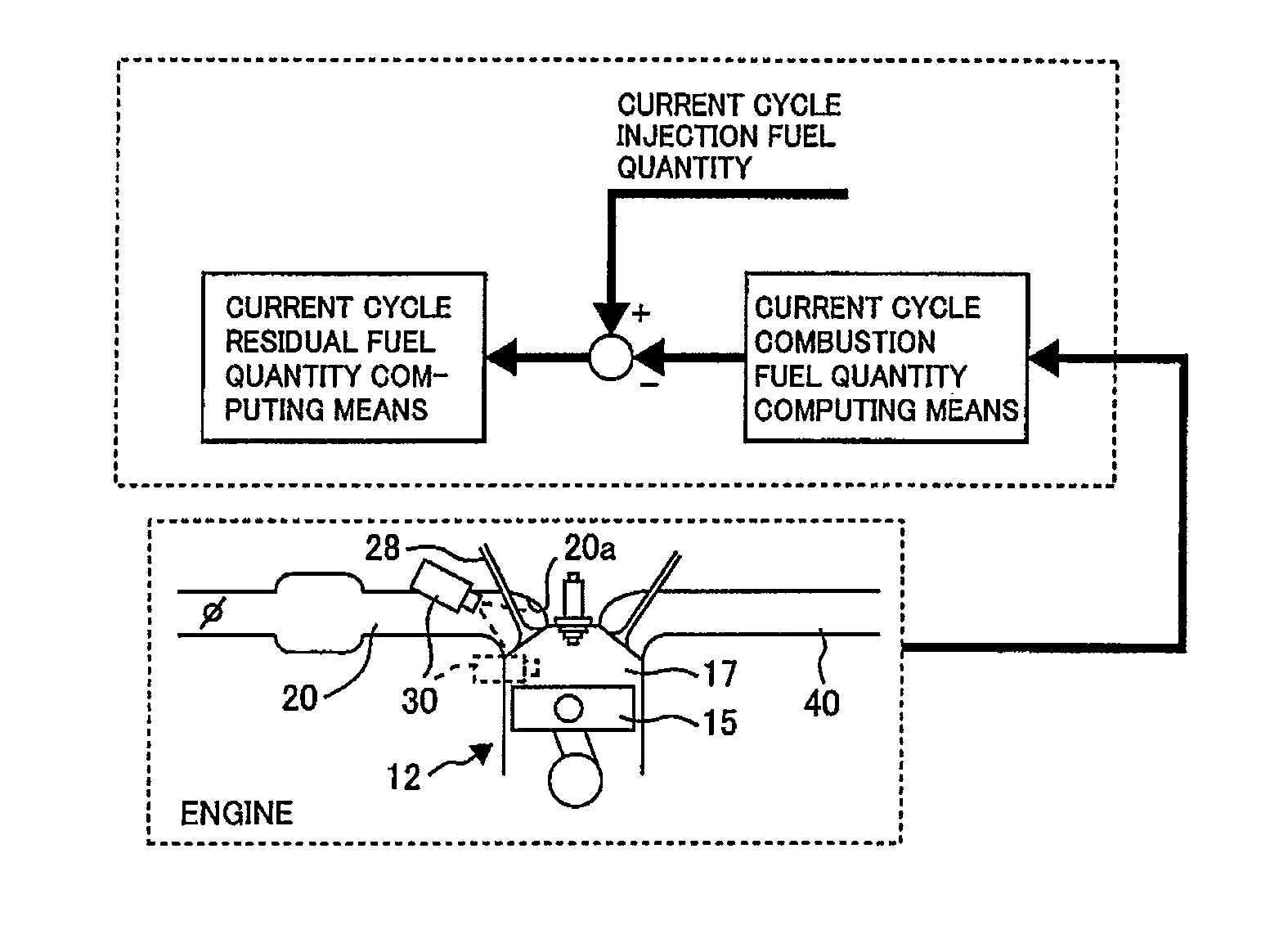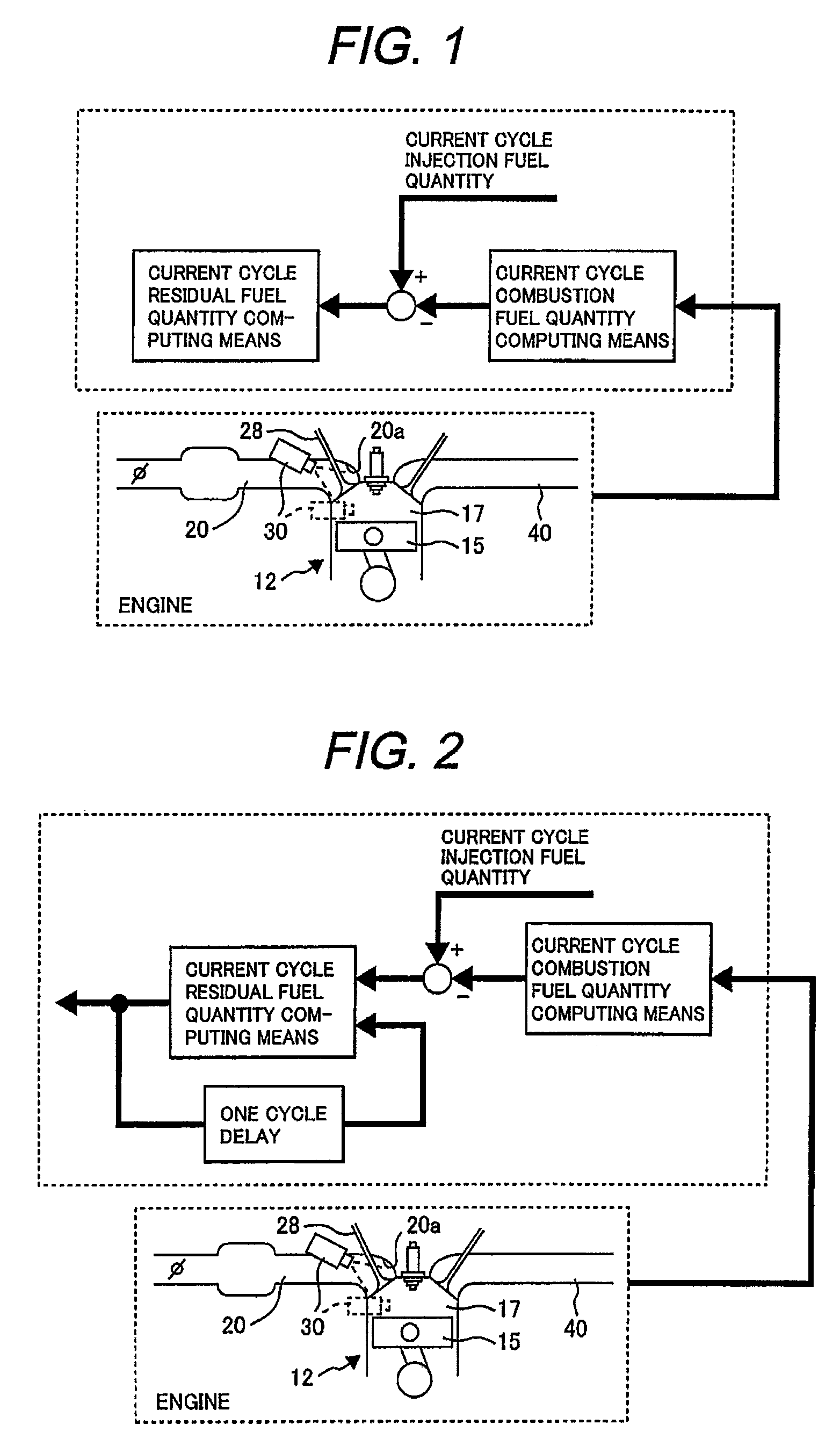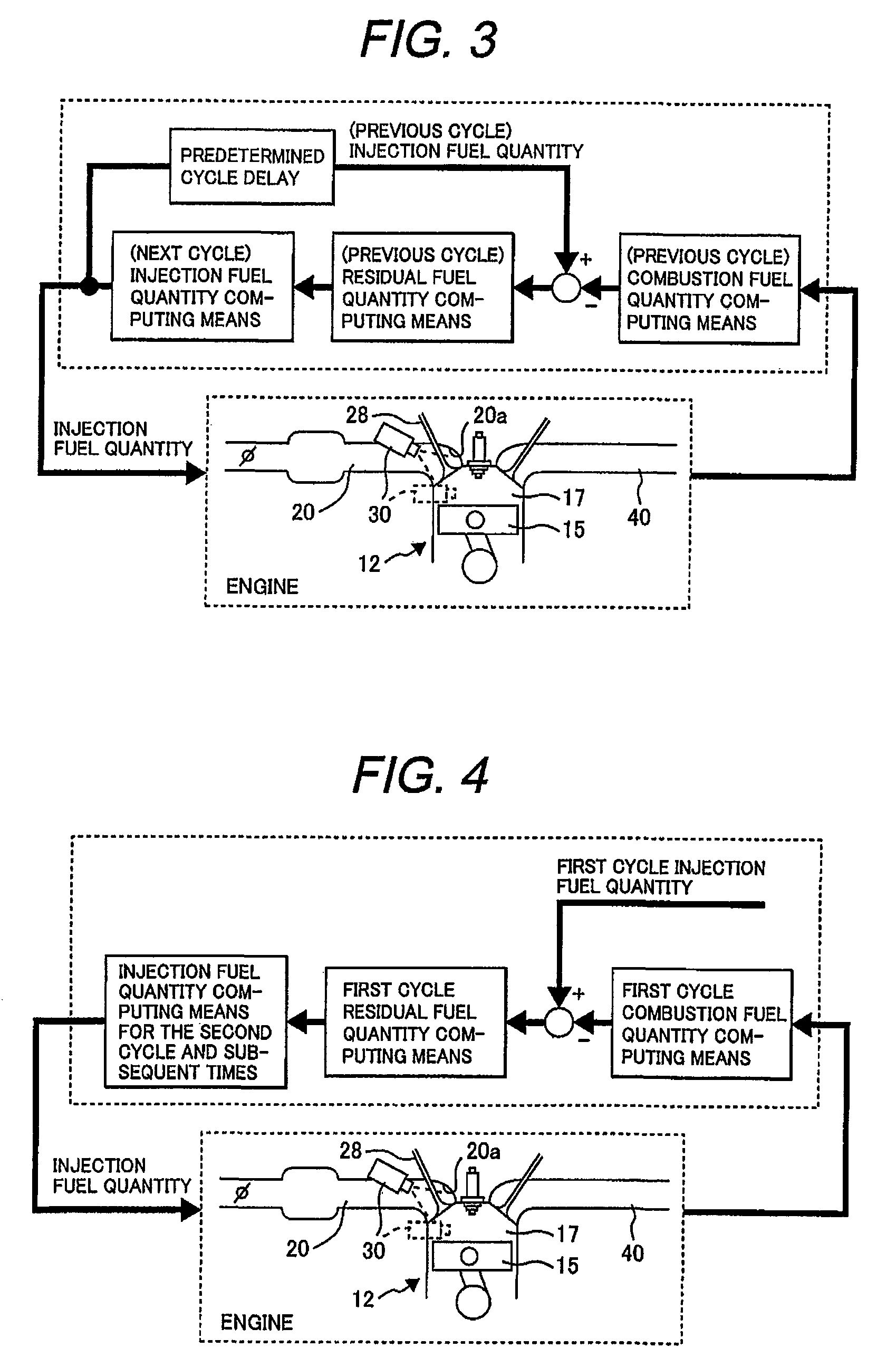Engine control system
a control system and engine technology, applied in the direction of electrical control, process and machine control, instruments, etc., can solve the problems of deterioration of exhaust emission characteristics due to remaining fuel, and achieve high accuracy and high robustness
- Summary
- Abstract
- Description
- Claims
- Application Information
AI Technical Summary
Benefits of technology
Problems solved by technology
Method used
Image
Examples
first embodiment
FIGS. 20 to 24
[0105]FIG. 20 shows the control system 1A of the first embodiment (the second and third embodiments also are the same as the first embodiment). The control unit 100 of the control system 1A as shown in a function block diagram, comprises a basic injection fuel quantity computing means 120, an injection fuel quantity-correction coefficient computing means 130, a combustion fuel quantity computing means 140 as a combustion fuel quantity determining, and a residual fuel quantity computing means 150. The injection fuel quantity-correction coefficient computing means 130 computes a correction coefficient value Tp_hos1 for each cylinder. The control unit 100 multiplies the basic injection fuel quantity Tp by Tp_hos1 (correction coefficient value), thereby the injection fuel quantity (Ti) for each cylinder is obtained so as to maintain the each cylinder combustion air-fuel ratio at a desired air-fuel ratio. In particular, the value (Tp_hos1) computed by the injection fuel qua...
second embodiment
The Second Embodiment
FIGS. 25 and 26
[0113]In the first embodiment shown as above, the residual fuel quantity (Fuel_R) only in the first cycle is obtained, however, in the second embodiment, the residual fuel quantity in the second and subsequent times is obtained.
[0114]The second embodiment differs from the first embodiment in only structures and functions of the combustion fuel computing means (which is denoted by reference numeral 140 in the first embodiment and by reference numeral 240 in the second embodiment) and the residual fuel quantity computing means (which is denoted by reference numeral 150 in the first embodiment and by reference numeral 250 in the second embodiment), and both are the same except for that. Therefore, hereinafter, mainly explained are the combustion fuel quantity computing means 240 and the residual fuel quantity computing means 250.
240 (FIG. 25)>
[0115]The computing means 240 obtains the combustion fuel quantity (Fuel_C) based on the engine speed (Ne). T...
third embodiment
FIGS. 27 and 28
[0119]In the second embodiment as shown above, the residual fuel quantity for the next cycle and subsequent times is computed by using the combustion fuel quantity (angular acceleration). In contrast to this, in the third embodiment, the residual fuel quantity in the first cycle is obtained by using the combustion fuel quantity, and the residual fuel quantity for the second cycle and subsequent times is obtained by the surface temperature of the inlet valve 28.
[0120]The third embodiment differs from the first and second embodiments in only structure and function of the residual fuel quantity computing means (which is denoted by reference numeral 150 in the first embodiment, by reference numeral 250 in the second embodiment and by reference numeral 350 in the third embodiment), and they are the same except for that. Therefore, hereinafter, mainly explained is the residual fuel quantity computing means 350 and an inlet valve-surface temperature estimating means 355 incl...
PUM
 Login to View More
Login to View More Abstract
Description
Claims
Application Information
 Login to View More
Login to View More - R&D
- Intellectual Property
- Life Sciences
- Materials
- Tech Scout
- Unparalleled Data Quality
- Higher Quality Content
- 60% Fewer Hallucinations
Browse by: Latest US Patents, China's latest patents, Technical Efficacy Thesaurus, Application Domain, Technology Topic, Popular Technical Reports.
© 2025 PatSnap. All rights reserved.Legal|Privacy policy|Modern Slavery Act Transparency Statement|Sitemap|About US| Contact US: help@patsnap.com



